Art Beat: Narrows exhibit celebrates 8 eclectic women artists
When she was invited to curate the current exhibition at the Narrows Center for the Arts, painter and photographer Sheila Oliveira reached out to six other female regional artists: Lydia Broderick, Bette Carney, Catherine Carter, Diane Cournoyer, Sarah Hale Folger and Deana Tavares.
She also contacted the family of her old friend Alison Horvitz (who died in August 2018) in order to borrow a few of her paintings. And she included herself as one of the exhibitors.
That grouping of artists is an eclectic eight. All of the work is two-dimensional and as it is untethered by a common theme, it allows for a wide range of sensibilities, sentiment and styles to engage the viewer.
Among the paintings that Oliveira selected to represent Horvitz and honor her memory is “Memory Jar,” a semi-abstract depiction of an uncapped vessel. Its surface is mottled with dabs of teal, indigo, cornflower and navy, and it appears glassine enough that one can see the golden aura that surrounds the jar to shimmer through, affecting a crystal blue persuasion. It is a perfectly fitting choice.
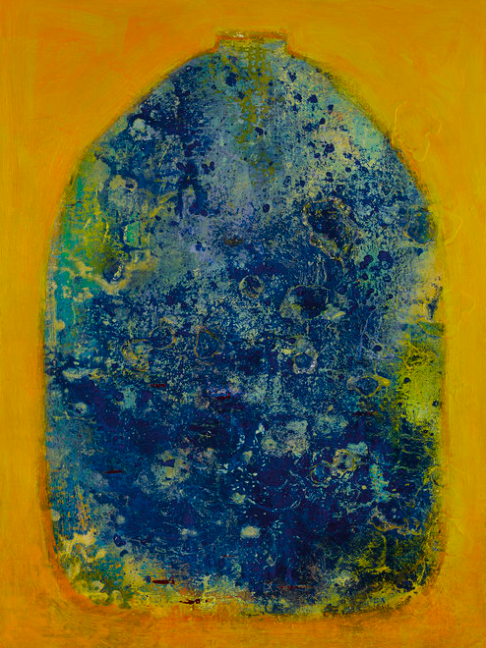
Carter is the only full-blown abstractionist in the show, joyfully abandoning the tenets of traditional realism. She exhibits a six-piece series which reveal a certain playfulness in the way she makes a line or smears a section of the surface, eschewing any hard edge or abrupt stops.
In “Birch Stripes,” squiggles of chocolate brown move across the surface like a cake icer’s message. “Spring Stripes” include bands of soft pink, baby blue and Irish Spring green markings, none rising to become anything truly discernible, which is likely her goal.
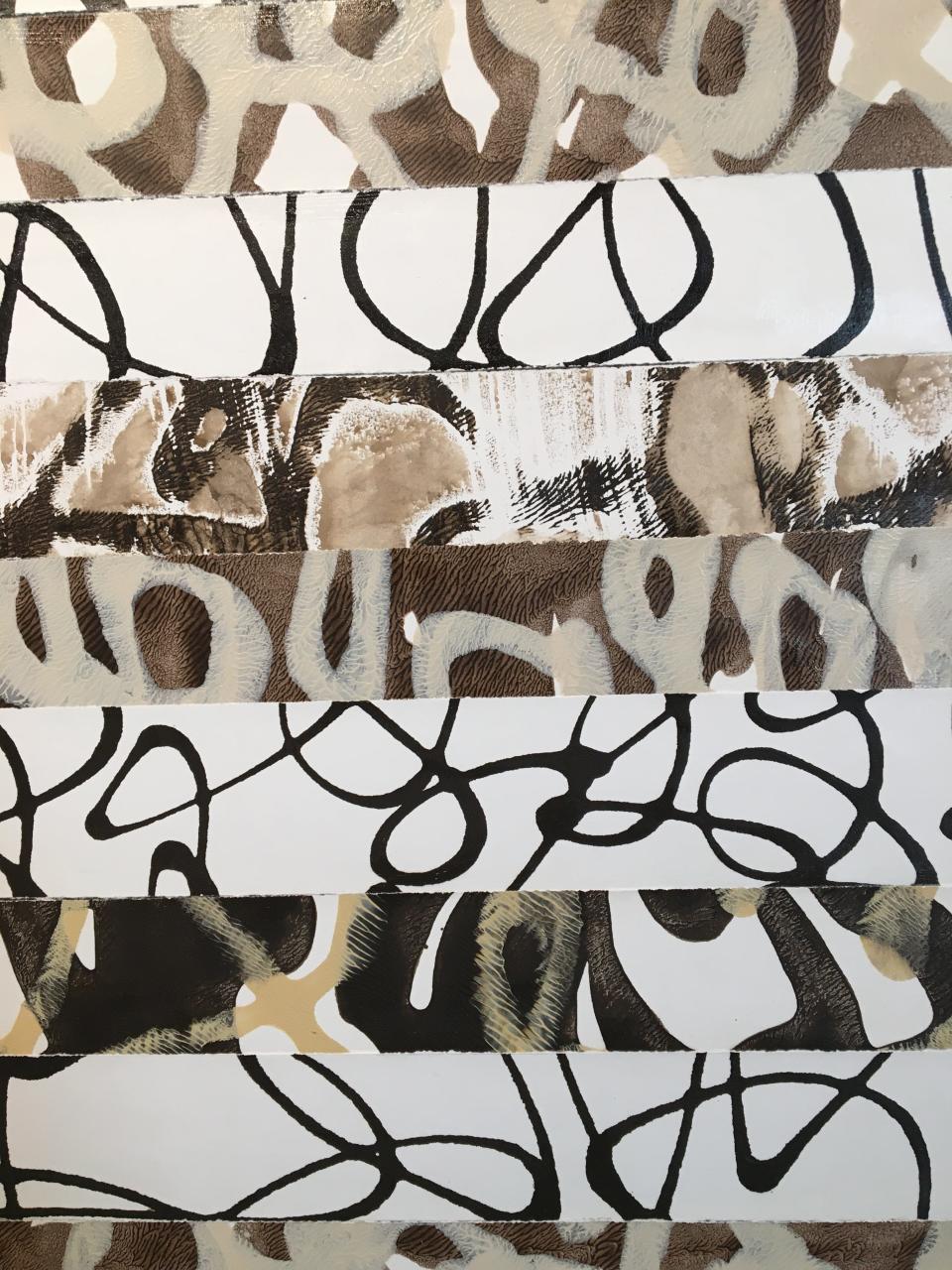
Lydia Broderick’s art is crisply illustrated and tightly refined. She has a graphic novelist’s sensibility, knowing how to draw in a viewer, with stylization that includes bits of text, mysterious symbols and an effective use of translucency.
“Balance” features a graceful woman, her hair tied in a bun, wearing nothing but a bikini or underwear. Her arm is thrusted in the air and her knee bent, perhaps she dances across her apartment floor or she traverses a tightrope above a crowd. And like a graphic novelist, she reveals just enough to make one want to know more, to buy the book.
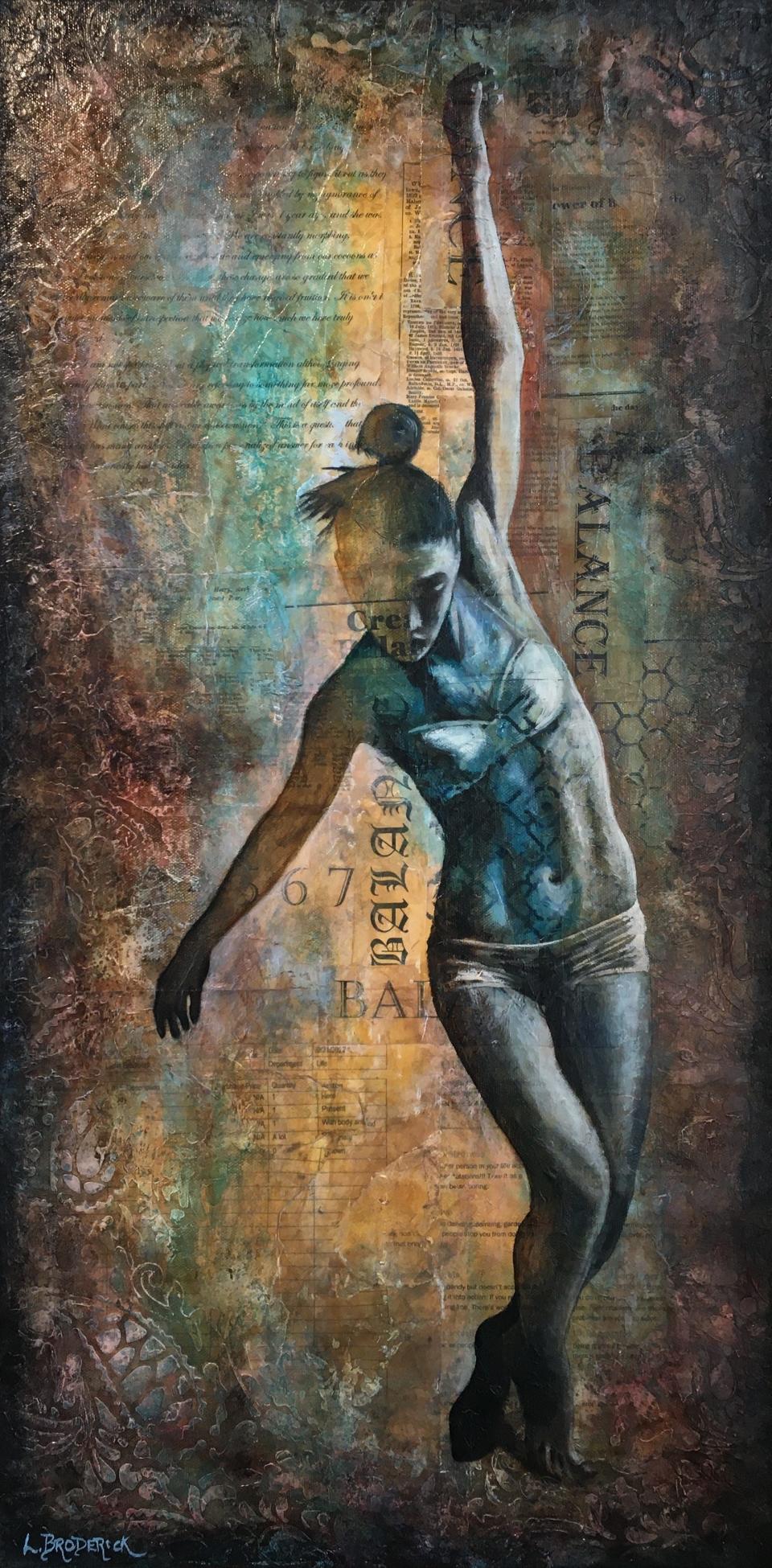
Cournoyer’s landscape paintings always exist in some otherworldly space, somewhere between the everyday forests and riverbeds that we all know and in some mythical realm. And that is not the realm of J.R.R. Tolkien or the Olympian pantheon but rather one of mysterious transitions and a softening of the edges between things. Light becomes earth, shadow becomes water, the distant becomes the near and vice-versa. Look closely at “View Through” or “River View” or “Three Graces” and grasp what ethereal means.
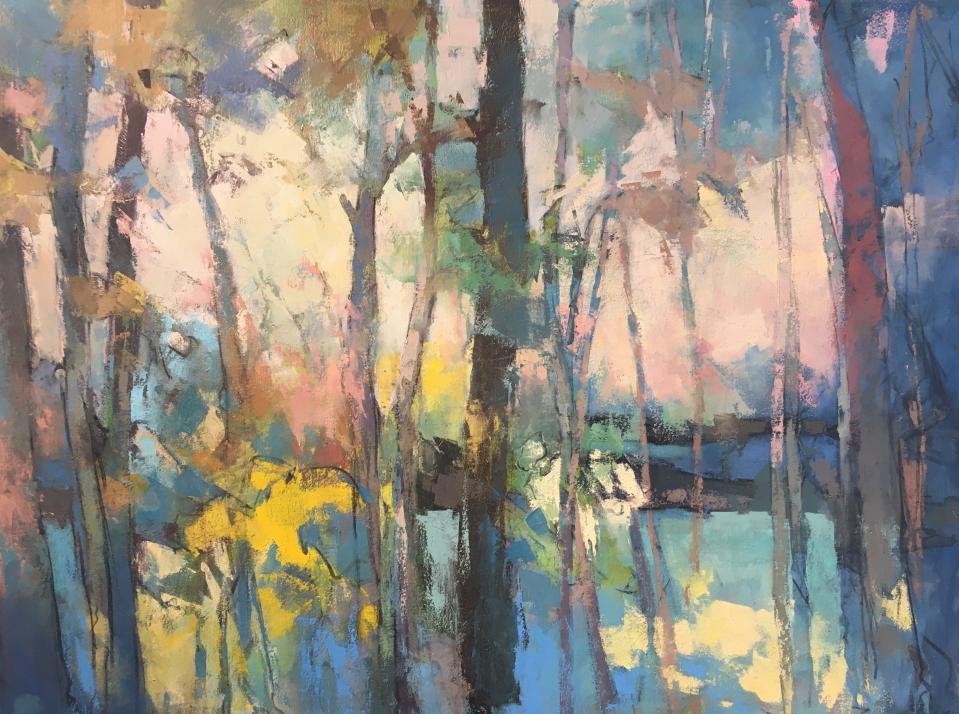
Tavares displays a series of children with oversized peepers, a bit reminiscent of the 1960s paintings done by Margaret Keane (and initially taken credit for by her husband Walter Keane, as depicted in the 2014 Tim Burton biopic “Big Eyes.”)
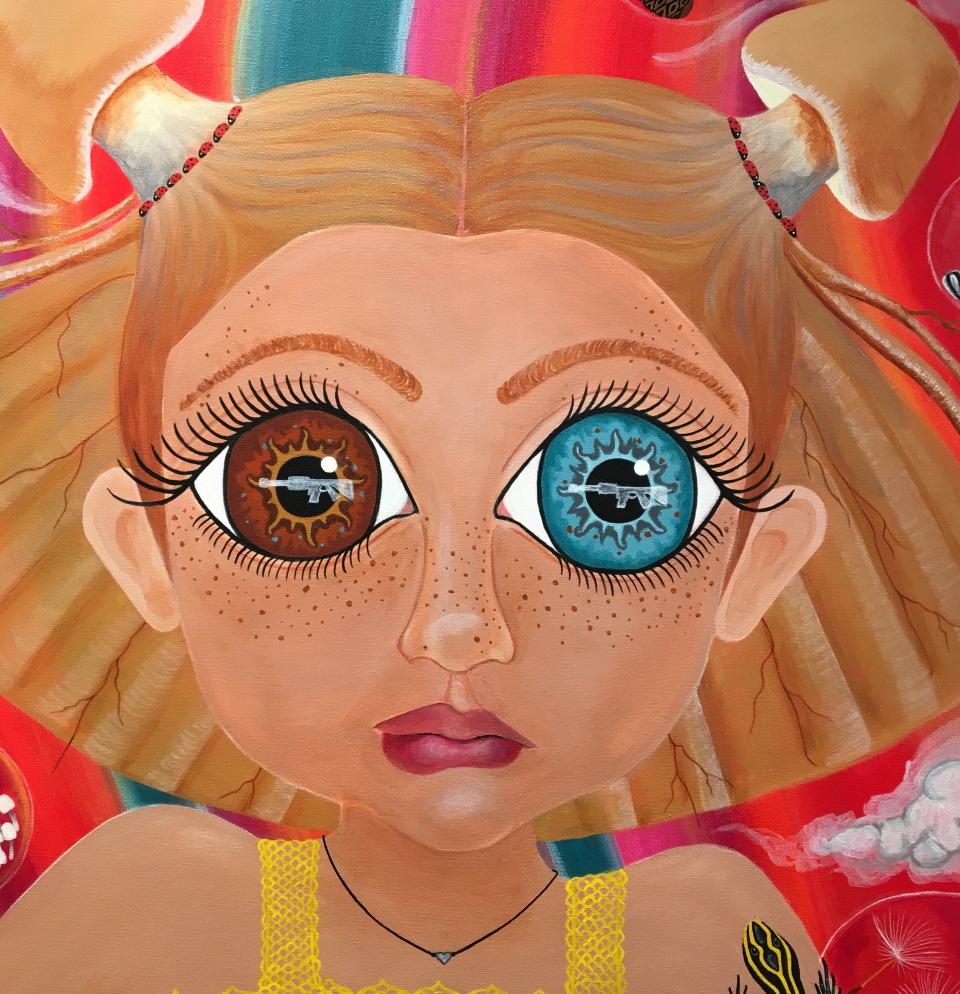
But Tavares is doing much more than cutesy pictures of mutli-ethnic little girls with flowers and animals. And nowhere is it more apparent than in her painting “Solomiya.” A freckle faced blonde girl stares blankly out at the world. A mushroom sprouts from either side of her head. And in the center of her pupils (one brown, one blue), there are the white shadowy images of automatic weapons.
The name Solomiya is Ukrainian in origin, derived from the Hebrew “shalom,” meaning peace. Does she see war in her future? Are the mushrooms a reference to the dreaded nuclear clouds? No easy answer but much to consider.
Among the works displayed by Oliveira are a set of black-and-white photographs, including one called “Studio American Gothic,” riffing on Grant Wood, featuring a semi-hipster, interracial couple, complete with overalls (on her) and pitchfork (still held by him.)
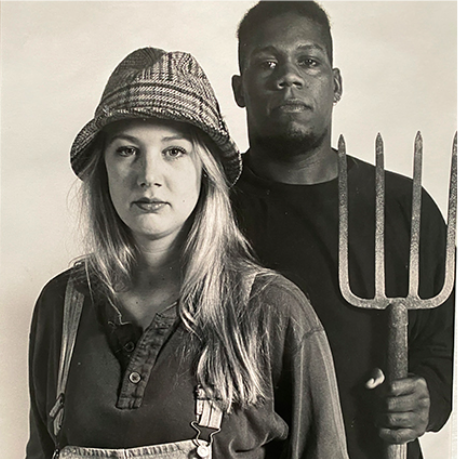
Folger presents a druggy painting, appropriately called “Day Tripping.” With its restrained almost monochromatic palette and purposely outlandish figures, it seems to reference Picasso’s “Guernica” as filtered through Cracked magazine, which doesn’t mean I didn’t like it.
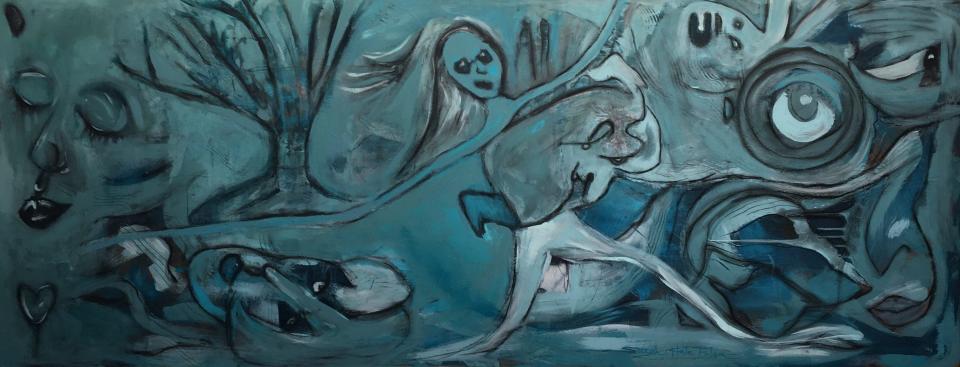
Elsewhere in the gallery, there is a painting of Drew Barrymore by Folger (and an image of Janis Joplin by Broderick) which serves to harden my opinion that celebrity portraits are an overdone and cliched motif, and most particularly, when they are derived from well-known photographs.
That said, I was quite taken by Bette Carney’s “Bill,” a 4’ X 6’ headshot of Bill Cosby. It is amusing, horrifying and provocative. Painted in a somewhat comic style, one needs to get within a few feet of it to realize that the dozens and dozens of little dark spots upon his face are not “flesh moles” but rather rats either erupting from his skin, snout side out, or burrowing their way in, tail side out.
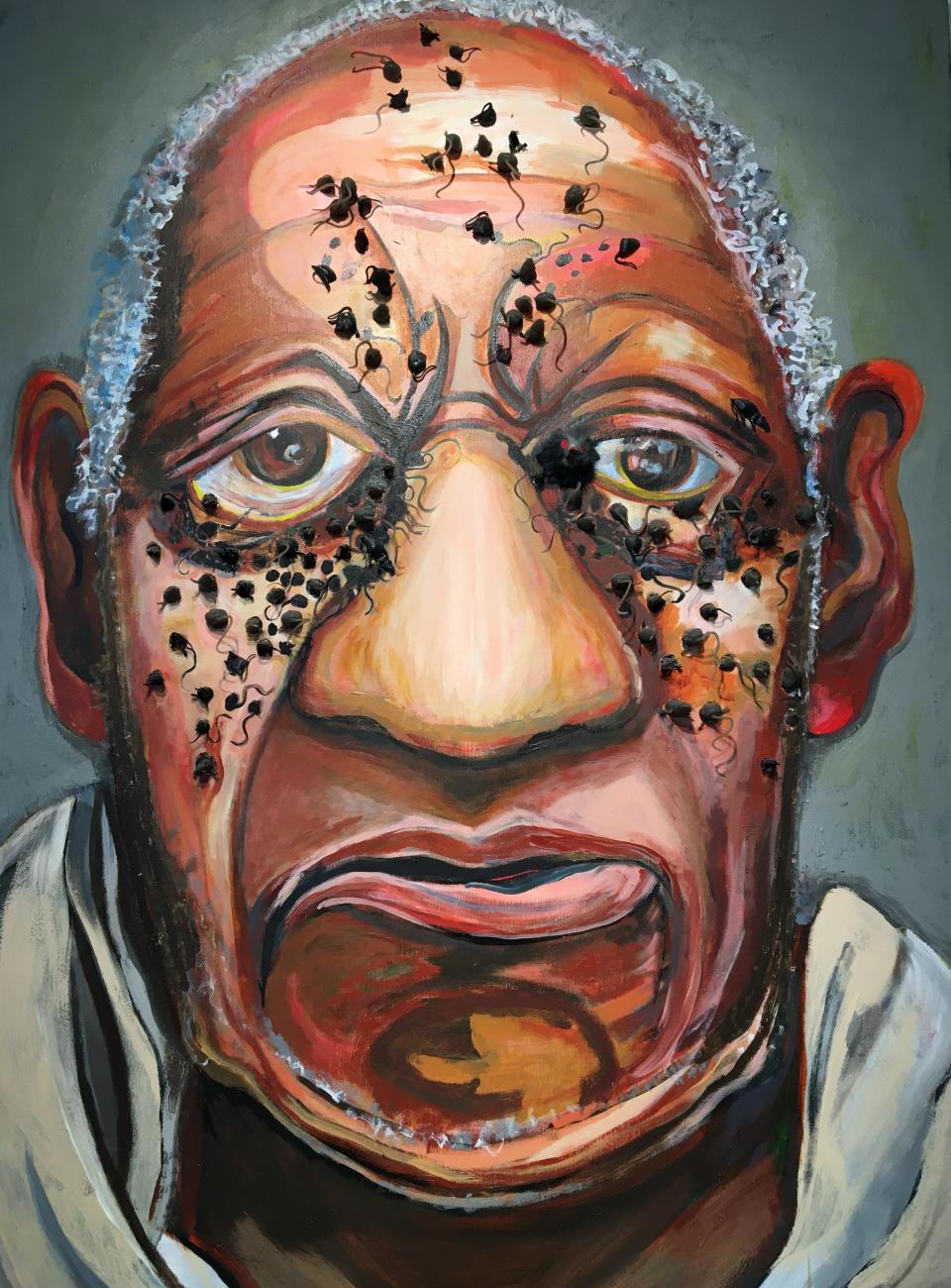
Might Carney be making commentary on those 35 women on the famed cover of the July-August 2015 New York magazine that “ratted” him out with charges of sexual misconduct? Seems likely.
Carney is an engaging painter that’s not afraid to shake it up, as in her terrific “Mary and the Virgin” which includes a cloaked woman watching another woman getting busy with some guy who didn’t merit inclusion in the title. And Carney’s not saying which one is which.
Check out the Eclectic Eight.
“Art Making Women: Fantasy & Reality” is on display at the Narrows Center for the Arts,16 Anawan St., Fall River, until May 26.
This article originally appeared on The Herald News: Art Beat visits Art Making Women: Fantasy & Reality at The Narrows

